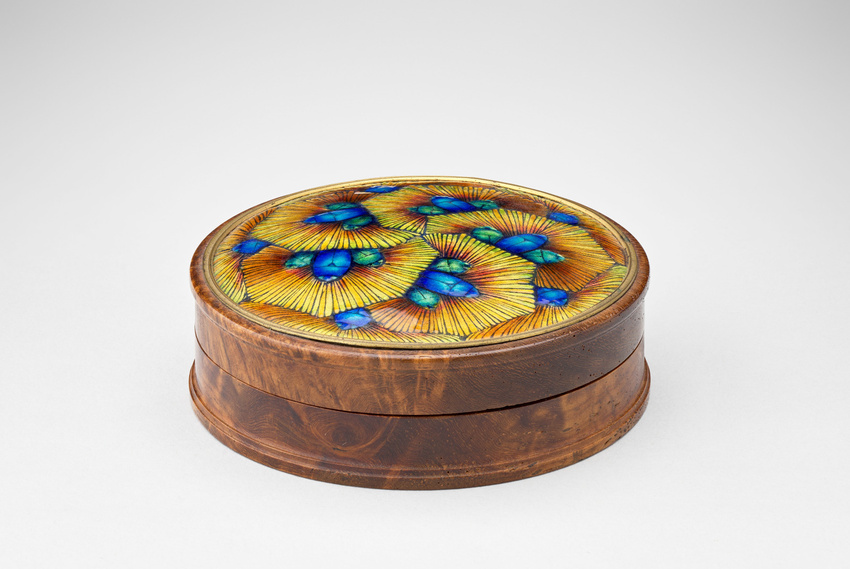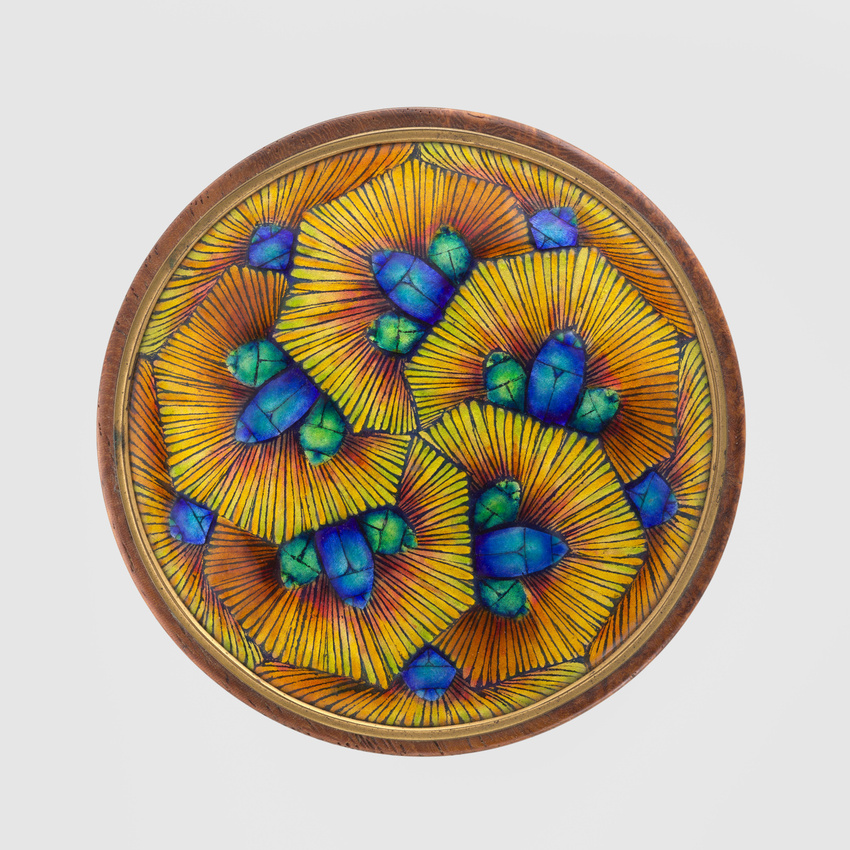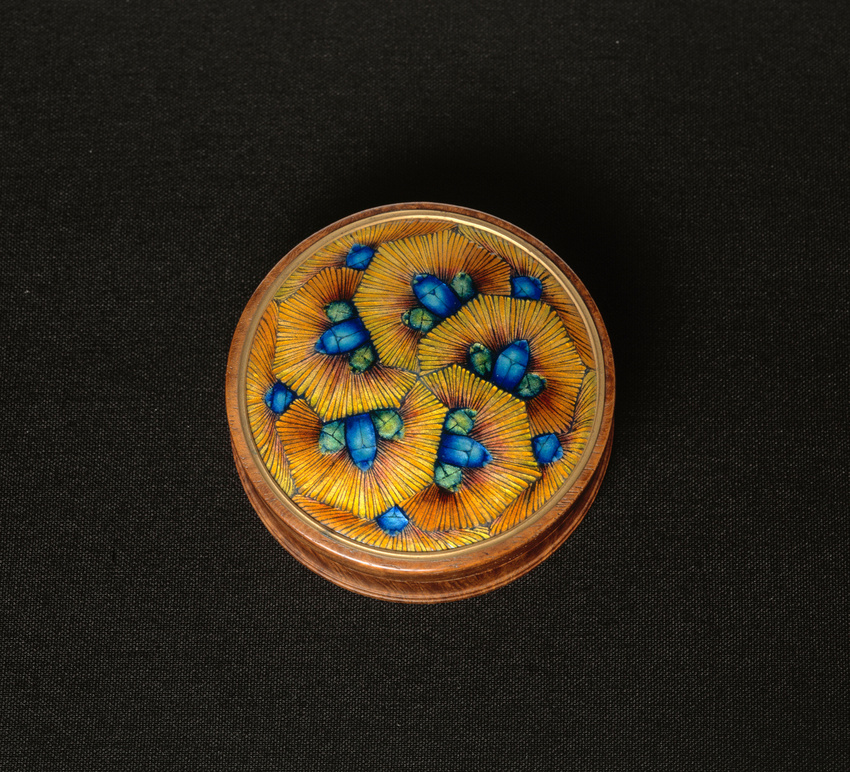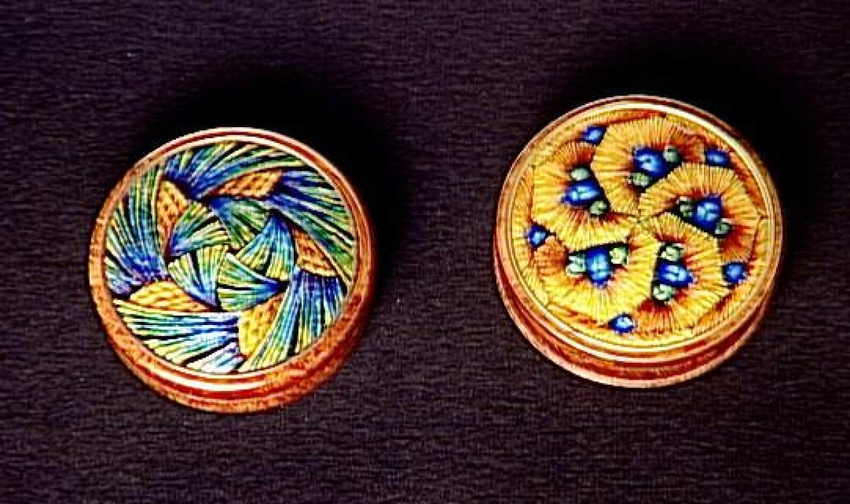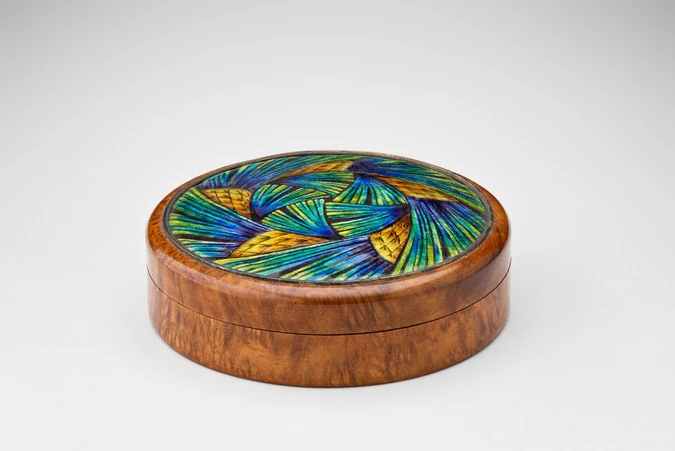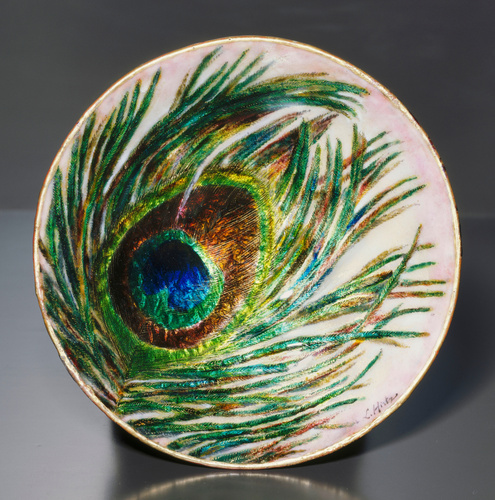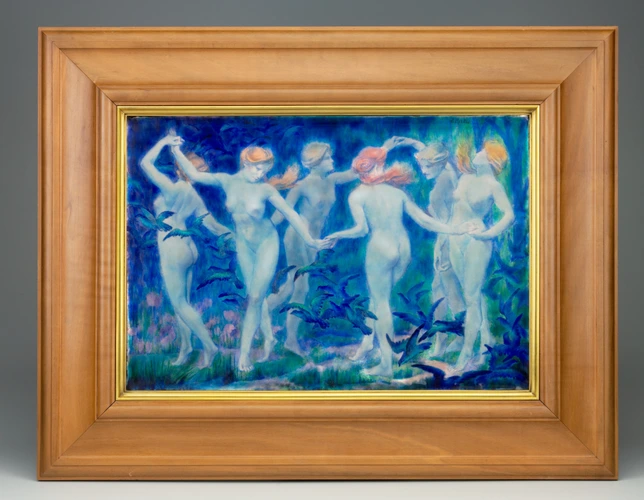Boîte
Having worked with great jewellers like Falize and Boucheron, for whom he created jewellery and objets d'art, Lucien Hirtz was one of the best exponents of painted enamel in the early 20th century. His regular submissions to the Salons, from 1896 to 1913, included as many female images – Gaiety, The Naiads, Reflections of Precious Stones – as purely naturalist motifs: foliage and insects, seaweed and fish, peacock feathers...
Thus, Hirtz remained faithful to the favourite themes of Art Nouveau well beyond 1900. Here, the lid is decorated with a design of pine needles and pinecones - conifers had previously inspired some of the creations of the great Art Nouveau masters like René Lalique and Lucien Bonvallet. But the circular shape of the box and the swirling design of the enamel decoration offer a more stylised version of this plant motif, one that is reminiscent of Japanese art.
